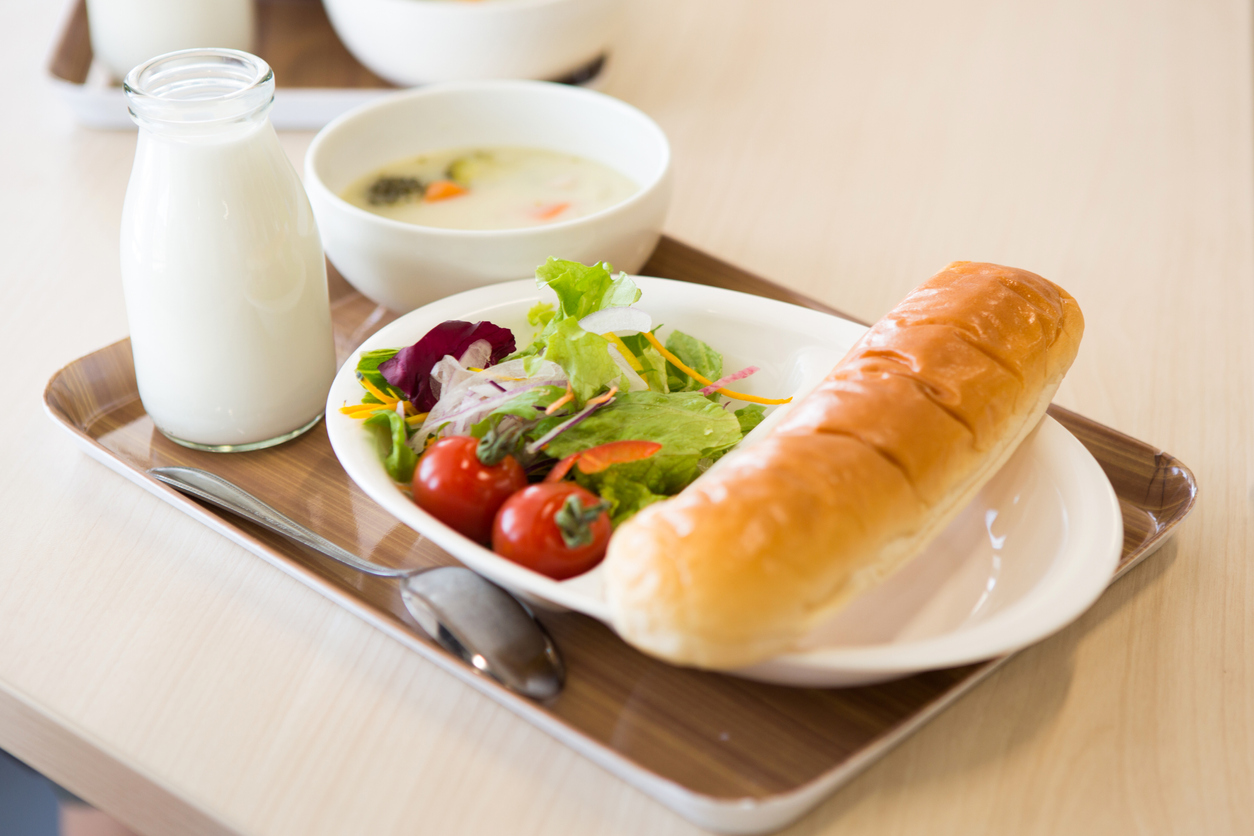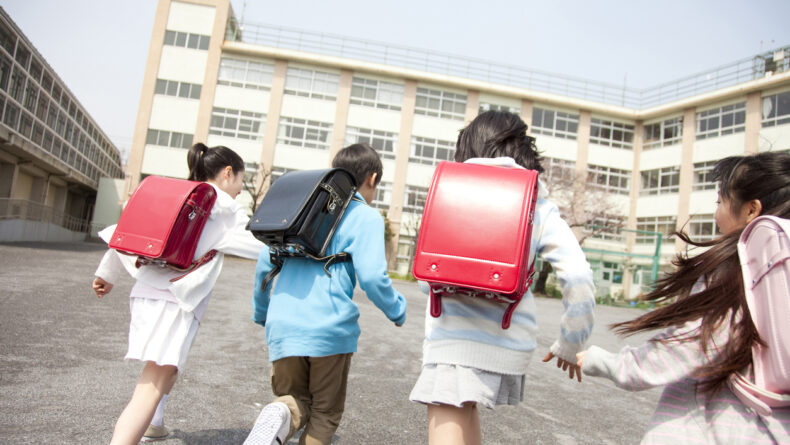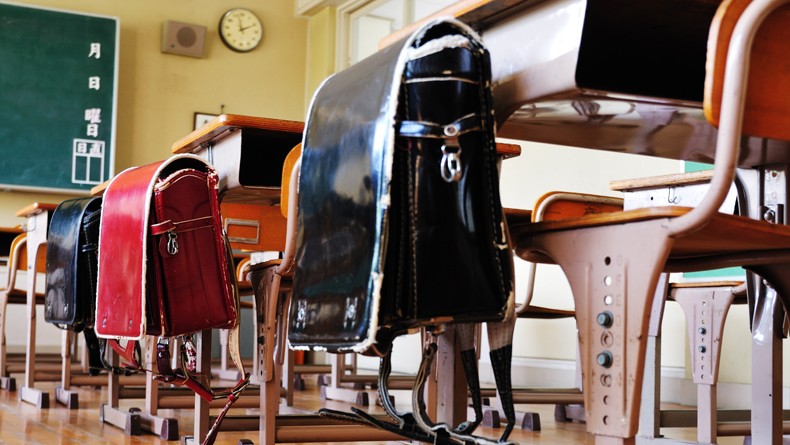Japanese School Lunches: More Than Just a Meal
Healthy food choices and positive eating habits
Fittingly for a country with its own rich traditional cuisine, Japan takes its catered elementary school lunches very seriously. More than just a meal, lunchtime is considered on par with school lessons in its educational importance. It also helps create a bond between schoolmates in a way that perhaps only sharing a meal can do.
Tokyo school lunches are planned by the school’s nutritionist and cooked onsite by a group of staff hired specifically for that task. They prepare big pots of soup and rice and such, which the students on lunch duty retrieve from the kitchen, wheel into the classroom on a big trolley and then dish out to their classmates—it’s a bit like a portable canteen. Outside Tokyo, school lunch centers will make and distribute the food to schools.
Students serving students
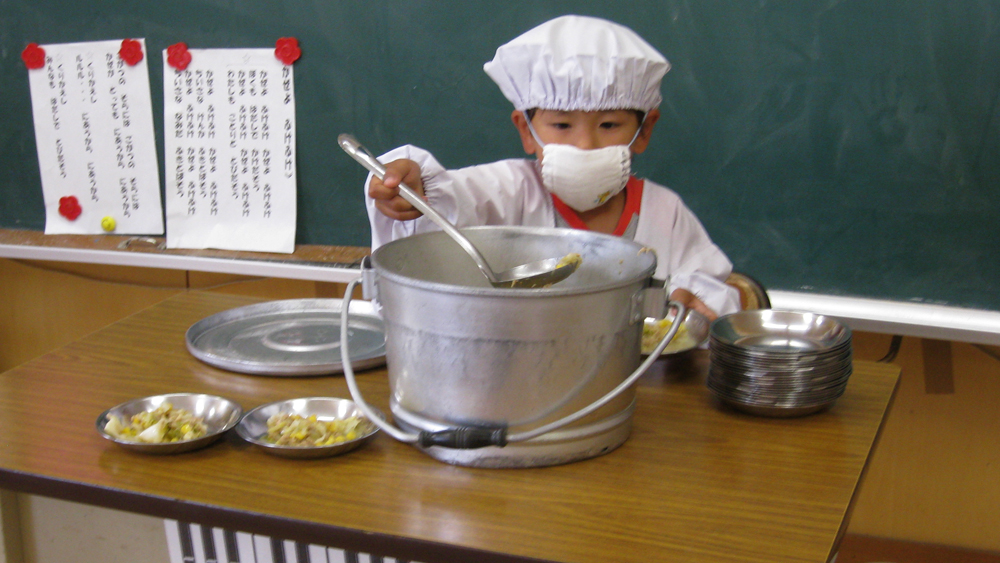 © Photo by AHLN
© Photo by AHLN
The students on lunch duty dress for the part, in a white kitchen cap and a long white smock-style apron. They also don a regular, flu-use medical mask. As the other students pass by with their trays they accept a bowl of each dish from the lunch-duty kids and take them back to their desks. Utensils are also provided. When the children return to their seats, they place their tray on the luncheon mat that they have brought from home and laid out on their desks.
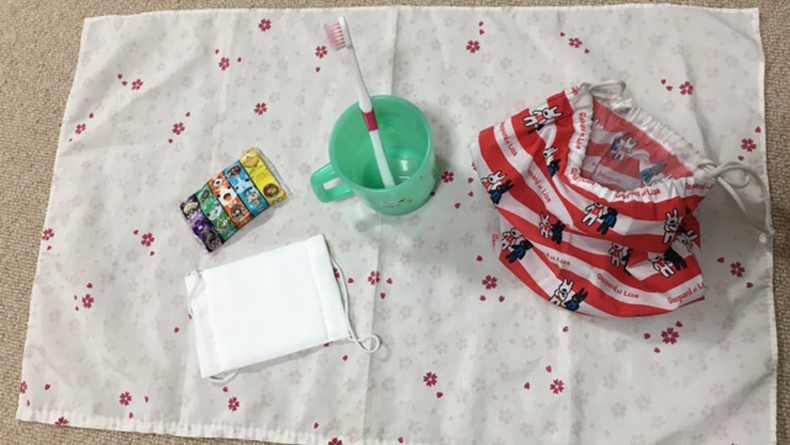
Also on the desk should be a pocket pack of tissues, a small hand towel and a cup. Students bring these items from home daily in a little bag that they usually hang off the side of their backpacks. Recently some schools are asking students to bring a toothbrush, too, for a post-lunch brush-up. Teachers eat the same kyuushoku catered lunch at their desks along with the students.
What’s on the menu?
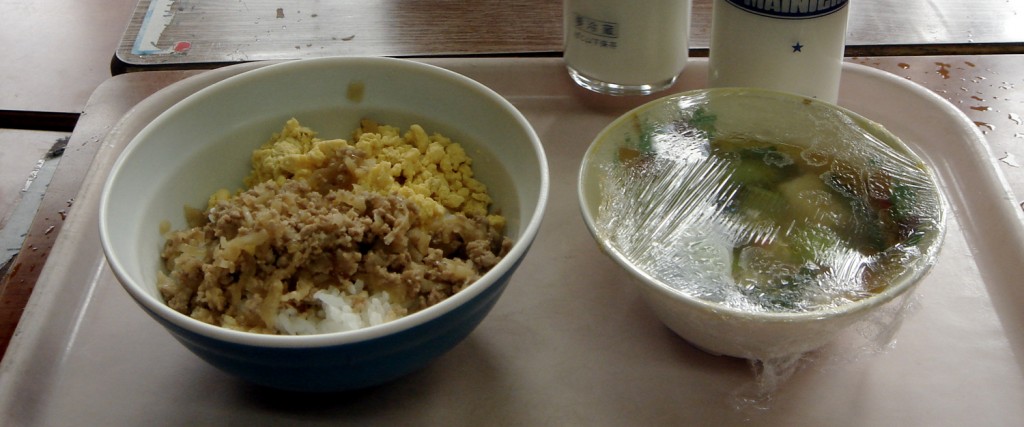 © Photo by Jennifer Murawski
© Photo by Jennifer Murawski
So what do they eat? Most often rice, soup, a salad and a meat or fish dish. A 200-milliliter bottle of milk is included daily, but once or twice a month coffee milk or a yogurt drink is served instead. The rice dish is rarely plain white rice. Instead, it will have something such as mushrooms or wakame kelp mixed through it. It also gets served as fried rice or pilaf. Occasionally the kids get noodles instead. Bread appears as the staple about once a month and almost certainly is sweet. Dessert is served once or twice a week, most often as a piece of fruit, but occasionally as a jelly or pudding.
The soup is most often miso soup, but a variety of soups are served, including other Japanese soups, such as the clear sumashi jiru, as well as Western-style pumpkin soup and Chinese-style egg soup, which make regular, monthly appearances. Salads appear most days and come in a wide variety—wakame salad, bean sprout salad, French salad, potato salad—but all ingredients, even cucumber, are cooked to prevent an outbreak of stomach virus.
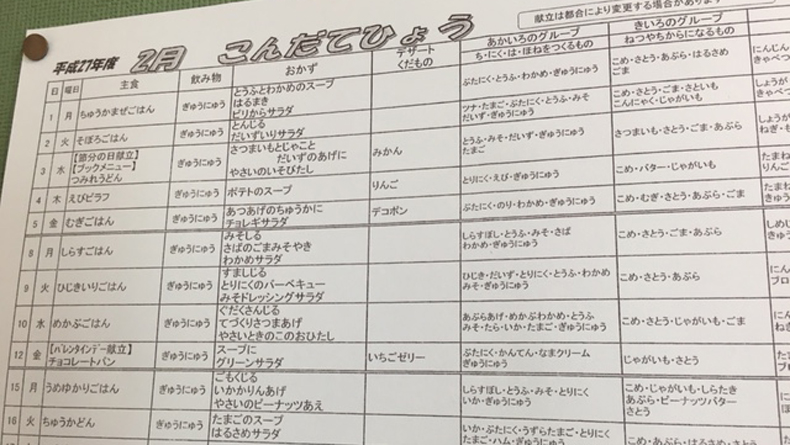
Meat dishes are often served atop rice as a donburi. Fish is the main dish on average about once a week. This is a rough guide, though, as the menu and the frequency of each type of dish differ according to the menu plan arranged by each school’s nutritionist. The meals often reflect various festive events—both Japanese ones, with pumpkin served at the winter solstice, for example—and non-native ones, such as with a chocolate dessert on Valentine’s Day.
How much does it cost?
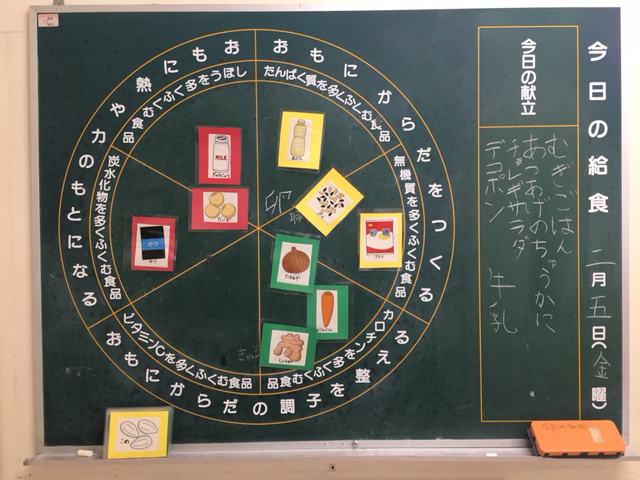
Parents pay for their children’s school lunches, but they don’t pay much; about ¥250 a meal in first and second grade, just under ¥300 in fifth and sixth grade, and midway between those in the middle years.
In line with broader Japanese society, schools here have become very aware of food allergies. The school entrance paperwork will include your child’s allergy information. Schools will likely cater for an allergic child by preparing her lunch without the allergic ingredients and placing it upon the kyuushoku trolley with her name on it.
Kyuushoku history
Japan’s school-lunch system is said to have begun in Yamagata prefecture’s Tsuruoka city in 1889 when a priest-run elementary school served rice balls, grilled fish and pickles to students too poor to bring lunch to school. The move was widely recognized as a good thing and schools across the nation began to follow suit.
Food shortages during the Second World War meant some schools were unable to provide lunch. Postwar, school lunches filled many school kids with much-needed nutrition and included skim milk donated by UNICEF and wheat donated by the United States. Rice dishes didn’t appear in modern school lunches until 1976.
More than just a meal
The school lunch system teaches children etiquette, serving and clearing up skills, and aims to teach them to make healthy food choices and positive lifelong eating habits. Since it also aims to have students try a wide range of food, teachers have traditionally encouraged them to eat all the food served to them. Anecdotal accounts from sempai moms include a teacher insisting a student complete his lunch and him sitting there in front of it all the way through the post-lunch playtime and into the next lesson.
Even back then the strictness to which the “please eat everything” rule was enforced varied according to the teacher, and today—in line with a shift in wider social values—such an extreme example is unlikely to be found. Ideally, sharing a meal should be an enjoyable experience that unites a class by helping classmates get to know each other more intimately and understand one another better.
aims to teach them to make healthy food choices and positive lifelong eating habits
When Japanese parents reminisce together about their own elementary school days, talk of school lunches invariably emerges and, although spoken of fondly, the tastelessness of the dishes is usually the main topic. It is a palpable bond for them. Today’s school lunches have improved in taste, with both teachers and students praising them. One wonders whether tasty school lunches can produce the same deep bond that today’s parents share over their kyuushoku. Let’s hope so!
For another fun look into Japanese school lunches, take a look at the video below, by Cafeteria Culture:


